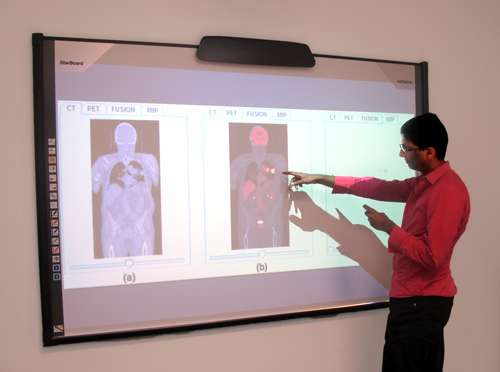Diagnosing illness with virtual body images

Images of cancer cells buried deep in lung tissue have been used by biomedical engineers at the University of Sydney to help develop new medical imaging technologies that will assist oncologists with medical research and diagnosis.
According to Dr Jinman Kim, theme leader in the Institute of Biomedical Engineering and Technology (BMET), medical imaging is now a fundamental aspect of health care delivery but the challenge facing clinicians is how best to extract or identify relevant information from these massive data sets.
Working with clinicians based at the Royal Prince Alfred hospital, the team has already developed a 3D "virtual human body," programmable to an individual's medical history and viewable on mobile devices.
The group was recently awarded an Australian Research Council (ARC) grant to expand its work in this area and develop methods of extracting and harnessing knowledge from large collections of biomedical imaging data.
"These data come from a variety of imaging scanners used to acquire images of the human body, such as dual-modal positron emission tomography and computed tomography (PET-CTs), ultrasound, and magnetic resonance imaging (MRIs)," says Dr. Kim.
"Existing imaging datasets store vital historical diagnostic information that can provide clinicians with an evidence-based resource to assist in their patient diagnosis and research," he says.
"But manual identification, labelling, and analysis of tumours from these images can be time consuming."
The new ARC funded project will build on the work of PhD graduate Ashnil Kumar whose research findings were published in this month's journal of Medical Image Analysis and investigated graph-based techniques for searching medical images based on patterns described by shape, colour, texture, and the spatial arrangement of objects.
"We hypothesised that the spatial mapping of different tumours could provide important insights into the heterogeneous manifestations of the disease and its patterns of spreading," Ashnil said.
"Our algorithm took this theory into account particularly in the case of patients with non-small cell lung cancer (NSCLC)," states Ashnil.
The ARC funded project will provide opportunities for content-based image search and retrieval, case-based reasoning, training, and comparison of data from clinical trials.


















